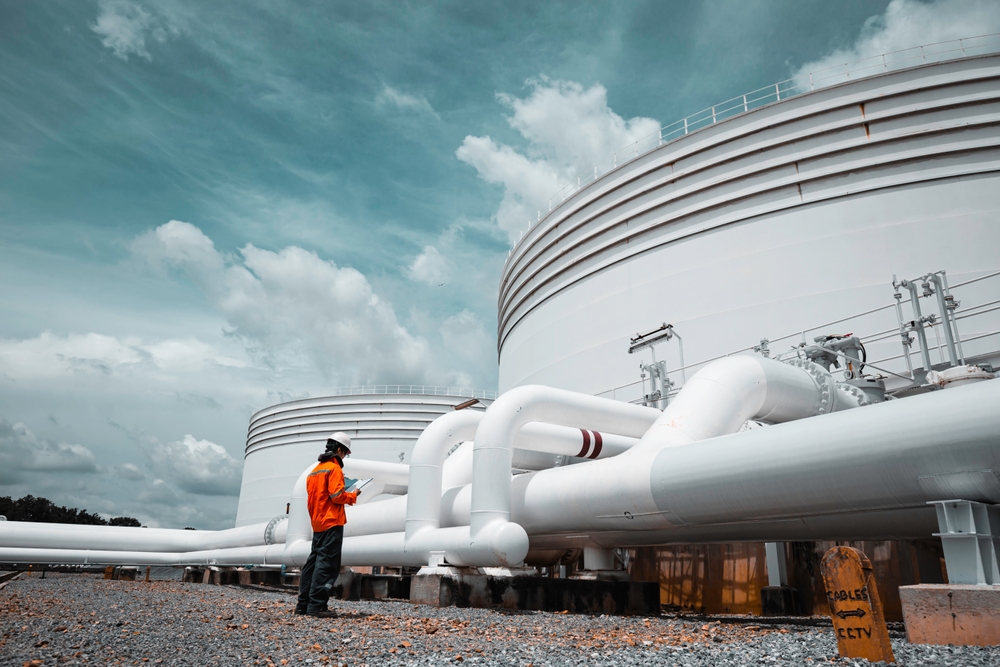
.jpg)
This course aims to study measurement of flow and custody transfer within oil and gas. It presents the principles and techniques of measurement of quantity and quality of oil and gas during the operations of production, transportation, and at the point of custody transfer that ensure transparency and compliance of the operations to the standards and regulations set in the industry.
| City | Start Date | End Date | Fees | Register | Enquire | Download |
|---|---|---|---|---|---|---|
| Cairo | 23-06-2025 | 27-06-2025 | 3950 $ | Register | Enquire | |
| Casablanca | 30-06-2025 | 04-07-2025 | 4950 $ | Register | Enquire | |
| Madrid | 07-07-2025 | 11-07-2025 | 6200 $ | Register | Enquire | |
| Paris | 14-07-2025 | 18-07-2025 | 6200 $ | Register | Enquire | |
| Istanbul | 21-07-2025 | 25-07-2025 | 4950 $ | Register | Enquire | |
| London | 28-07-2025 | 01-08-2025 | 6200 $ | Register | Enquire | |
| Istanbul | 04-08-2025 | 08-08-2025 | 4950 $ | Register | Enquire | |
| Kuala Lumpur | 11-08-2025 | 15-08-2025 | 4950 $ | Register | Enquire | |
| Sharm El Sheikh | 01-09-2025 | 05-09-2025 | 3950 $ | Register | Enquire | |
| Cairo | 08-09-2025 | 12-09-2025 | 3950 $ | Register | Enquire | |
| Rome | 15-09-2025 | 19-09-2025 | 6200 $ | Register | Enquire | |
| Madrid | 22-09-2025 | 26-09-2025 | 6200 $ | Register | Enquire | |
| Casablanca | 29-09-2025 | 03-10-2025 | 4950 $ | Register | Enquire | |
| London | 06-10-2025 | 10-10-2025 | 6200 $ | Register | Enquire | |
| Prague | 13-10-2025 | 17-10-2025 | 6200 $ | Register | Enquire | |
| Manama | 20-10-2025 | 24-10-2025 | 4400 $ | Register | Enquire | |
| Amsterdam | 27-10-2025 | 31-10-2025 | 6200 $ | Register | Enquire | |
| Cairo | 03-11-2025 | 07-11-2025 | 3950 $ | Register | Enquire | |
| Madrid | 10-11-2025 | 14-11-2025 | 6200 $ | Register | Enquire | |
| Casablanca | 24-11-2025 | 28-11-2025 | 4950 $ | Register | Enquire | |
| Dubai | 01-12-2025 | 05-12-2025 | 4300 $ | Register | Enquire | |
| Geneva | 08-12-2025 | 12-12-2025 | 5600 $ | Register | Enquire | |
| London | 15-12-2025 | 19-12-2025 | 6200 $ | Register | Enquire | |
| Cairo | 22-12-2025 | 26-12-2025 | 3950 $ | Register | Enquire | |
| Casablanca | 29-12-2025 | 02-01-2026 | 4950 $ | Register | Enquire |
As petroleum and crude oil are valuable and critical raw and processed resources, it is essential that flow calculations for such transactions adhere to stringent regional authority standards. The use of technology, particularly in flow measurement, is crucial across various industries, including oil, power, chemicals, food, water, and waste treatment.
Typical flow measurement devices in processing plants can measure transmission flows with an accuracy of less than 1%. A measurement error of this magnitude can potentially result in annual losses of several million dollars due to operational inconsistencies. Therefore, these industries require precise and reproducible measurements of the fluids—whether gas, liquid, or steam—passing through specific checkpoints.
In this oil and gas flow measurement and custody transfer training, participants will gain comprehensive knowledge about custody transfer, flow measurement definitions, types, and their relevance to the strategic and tactical goals of the organization. The course aims to enable participants to appreciate the interrelationship between the organization’s activities and its financial performance, addressing logical challenges related to financial transaction measuring techniques, production allocation, and custody transfer.
At the completion of the course on oil and gas flow measurement and custody transfer, participants will be able to:
Unit 1: Introduction and Key Concepts for Custody Transfer and Flow Measurement
Unit 2: General Flow Meter Performance and Characteristics
Unit 3: General Characteristics and Performance of Flow Meters
Unit 4: Applications and Types of Flow Meters
Unit 5: Aspects Determining Custody Transfer and Metering

.jpg)

.jpg)
.jpg)














